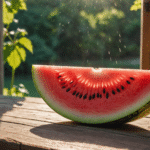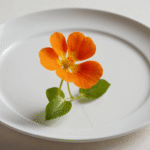Organic farming is a method of producing food in a manner that is healthier for the environment and more sustainable than conventional methods. It emphasizes biodiversity, soil fertility, crop rotation and weed suppression.
Biodiversity in a garden means the presence of a variety of plants, which is beneficial for both plant health and pest control. It also creates a healthy habitat for wild wildlife like birds, reptiles and mammals.
Once you’ve acquired your bales, they’ll need a bit of prep to be ready for planting. Choose the spot where you want your garden — the sunnier, the better — and arrange your straw bales. Make sure that the cut end is facing up, so that the pieces of straw act like straws and will absorb water efficiently.
The first step is to saturate them with water. Use your hose to drench them until the water begins to run out from underneath the bale.
Advertisement

Miriam Doerr Martin Frommherz/Shutterstock
Because a straw bale doesn’t have the nitrogen that soil contains, you’ll need to add some. There are multiple options for nitrogen sources, but one of the best is blood meal. Sprinkle about three cups over the top of each bale, water it in well and leave it to soak in. That’s it for day one. For the next two weeks, follow this schedule:
Day 2: Water thoroughly, adding at least 1 gallon (3.78 liters) of water to each bale.
Day 3: Sprinkle 3 cups (0.75 quarts) blood meal over each bale and water it in with 1 gallon (3.78 liters) of water. Once you begin adding your blood meal, don’t overwater, which will force the nutrients out of the bale. You want the bale wet enough to begin to break down, but not so wet that your blood meal runs out the bottom.
Day 4: Water
Day 5: Sprinkle 3 cups (0.75 quarts) blood meal over each bale and water it in with 1 gallon (3.78 liters) of water.
Day 6: Water
Day 7: Sprinkle 1.5 cups (0.3 quarts) blood meal over each bale and water it in with 1 gallon (3.78 liters) of water.
Day 8: Sprinkle 1.5 cups (0.3 quarts) blood meal over each bale and water it in with 1 gallon (3.78 liters) of water.
Day 9: Sprinkle 1.5 cups (0.3 quarts) blood meal over each bale and water it in with 1 gallon (3.78 liters) of water.
Day 10: Water
Day 11: Water
Day 12: Water
Day 13: Water and add 2 cups (0.5 quarts) of all-purpose 5-5-5 fertilizer.
Day 14: You are ready to plant.
All the nitrogen will make the straw begin composting, which in turns makes a healthy environment for plants. On day 14, you’re ready to plant. Make a divot in the straw and insert seedlings, pressing a peat moss and soil mix around them. If you are planting from seeds, spread a 1 to 2 inch (2.5 to 5 centimeter) thick layer of potting soil over the tops of your bales and plant your seeds in that, according to the instructions on the package, or as you normally would plant them.
Advertisement
Source: home.howstuffworks.com



